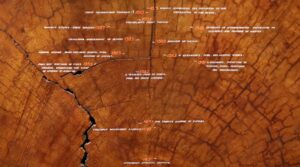
By Antony-22 – Own work, CC BY-SA 4.0, https://commons.wikimedia.org/w/index.php?curid=140495200
The Digital Collaboratory for Cultural Dendrochronology (DCCD) is a digital repository and interactive library of tree-ring data. Its content is developed through research of, among others: archaeological sites (including old landscapes), ship wrecks, buildings, furniture, paintings, sculptures and musical instruments. Dendrochronological research can be used to determine the calendar year in which a tree was cut down allowing wooden objects and timber to be dated. Dendrochronology is also used to determine in which area and under what conditions the tree grew, providing information about the way the landscape was formed and used in the past.
The collection which consists of 3,817 records covers datasets mainly from the Netherlands and Brussels but also from the UK, Scandinavia and Spain and eastern Europe. To view the collection, go to the Collection record and then click on the ‘Show all records’ link on the right hand side (above the Thematically similar heading). The records are classified under the Resource type ‘Dating’ and have been published by DANS.
About the image: A “tree cookie” cross-section of a Coast Douglas-fir tree displayed in the Royal Ontario Museum. The tree was over 500 years old when it was cut down in British Columbia in the 1890s. The markings indicating historical events were added in the 1920s.
Further information: Dendroarchaeology in Europe is an article published on the Frontiers Open Science platform which provides a comprehensive overview of this field covering the history, methodologies and a wide range of examples of how dendrological data has been used for archaeological dating.

